Ultimate 4-Day Amsterdam Itinerary
Do you want to know what to do in Amsterdam in 4 days?
In this article, which I wrote after having visited the Dutch capital many times (both for work and for pleasure), I decided to share a 4-day itinerary, divided into day 1, 2, 3 and 4.
In addition to the itinerary, you will find many curiosities about the attractions, and what to know before visiting.
Happy reading and enjoy your stay in Amsterdam!
Before we start...
Table of Contents
Useful Links for Your Trip to Amsterdam
- The Amsterdam City Card : the tourist pass for FREE access to almost all of Amsterdam’s ATTRACTIONS and for unlimited use of TRANSPORT (with a saving of 40-60% on the total)
- GVB City Pass : the pass that allows you to use FREE TRANSPORT
Tickets to the most popular attractions
- Ticket for the Rijksmuseum : one of the top 10 museums in the world
- Ticket for the Van Gogh Museum : the most important museum dedicated to Van Gogh in the world. With over 200 paintings by the famous Dutch painter
- Ticket for the Heineken Experience : one of the most fun experiences to do in Amsterdam
- Ticket to Keukenhof + Transfer from Amsterdam : visit the largest spring garden in the world, with a convenient return transfer service.
Where to stay in Amsterdam
- Economic: Cityhub Amsterdam
- For couples nhow Amsterdam Rai
- For families: Yotel Amsterdam
- Luxury: Hotel Estherea
Day 1: Center of Amsterdam
On this first day we will visit the historical center of Amsterdam. This includes the two areas of the Medieval Center and the Red Light District.
The Medieval Center is the oldest part of the city, and is in a nutshell, the area that gave birth to Amsterdam.
The Red Light District was born in the 1500s after the Catholics were overthrown by the Protestants. The area which has always been a red light area, was born to entertain the many sailors, traders and navigators who landed in Amsterdam.
Here’s exactly what we’ll see today:
- Dam Square and Royal Palace
- Begijnhof
- Flower market
- Amsterdam Museum
- Red Light Secrets
- Bulldog The First
Accommodation in the center of Amsterdam
If you haven’t booked accommodation yet, I’ll tell you right away that the center is one of the best areas. This is because it is well connected, allows you to move easily on foot or by bike and hosts many of the attractions we will visit.
The cons? It’s not a cheap area to stay.
Which hotels and accommodations to choose? Here are the recommended ones:
- Economic: Heart of Amsterdam Hotel oppure The Bee Hostel
- Mid-Range: Amsterdam House Hotel
- Luxury : Hotel Estherea
FIND THE BEST ACCOMMODATIONS IN THE CENTER
Dam Square and the Royal Palace
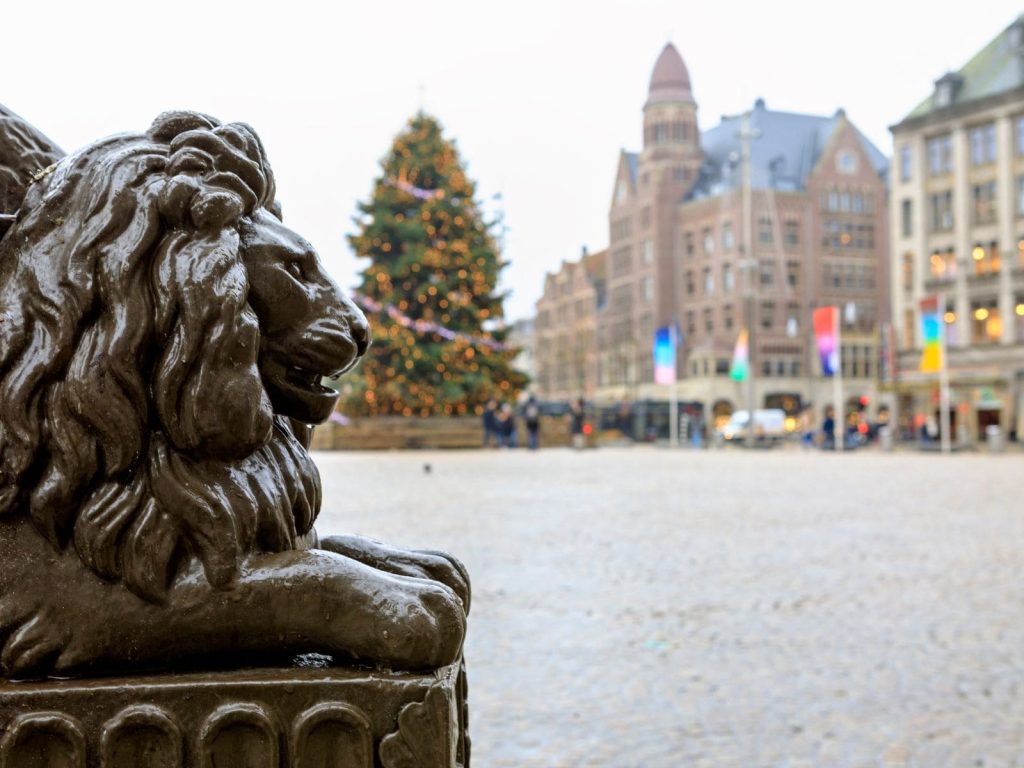
The first stop on our itinerary is the most famous square in Amsterdam. The Dam. This square takes its name from a dam built in the 13th century to prevent the city from being continuously flooded by water.
The square thus assumed a central role in the life of the inhabitants, becoming an important fish market and place of exchange, as well as a loading and unloading platform for the many ships arriving in Amsterdam.
Accommodation in Dam Square
In this square is the Royal Palace, which used to be Amsterdam’s town hall but was later transformed into an opulent Baroque-style royal palace.
Today it is used by the Dutch royal family only on special occasions, if you have the Amsterdam City Card the visit is free, and it is worth taking a look and admiring the rich rooms of what is the most opulent building in the city.
Another thing to see in Dam Square is the National Monument, a 22-meter-high stone pillar built to commemorate the victims of World War II.
Finally, another unmissable visit for me (especially if you’ve never been to a wax museum) is Madame Tussauds in Amsterdam, which was the first museum of the famous chain to open in continental Europe.
More information about Madame Tussauds in Amsterdam.
Begijnhof
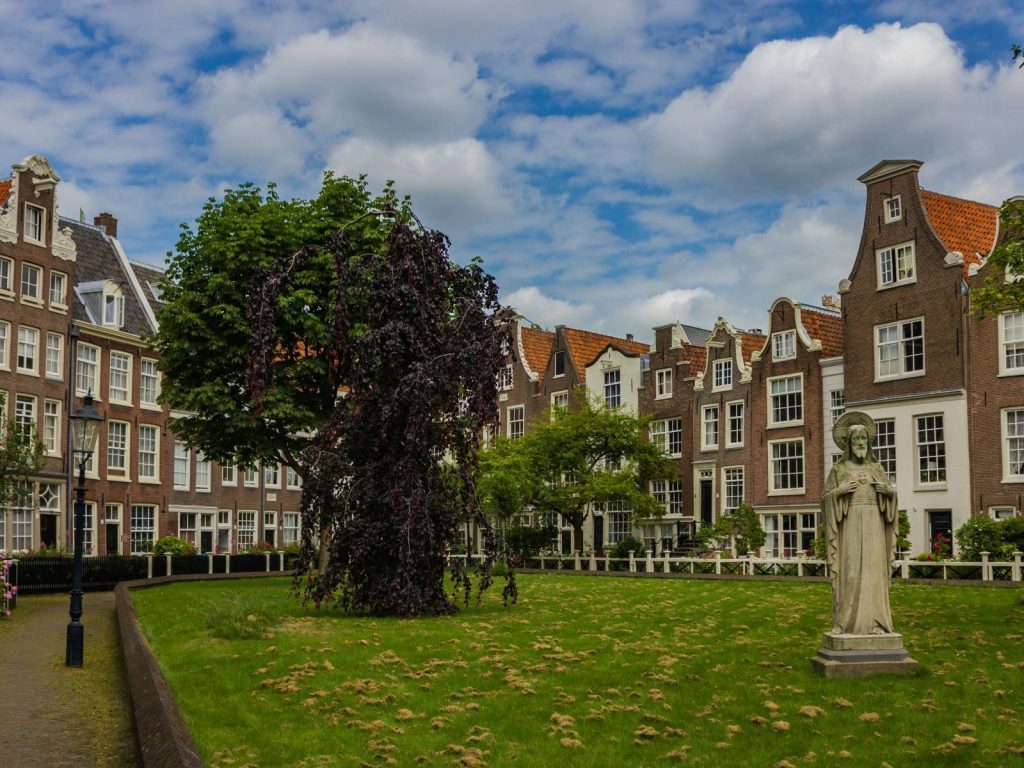
A few minutes’ walk from Dam Square we find the famous Beguine Courtyard or Begijnhof. Until 1970, the courtyard was inhabited by the Beguines, bachelor women who dedicated their lives to prayer and service to the neediest.
The Begijnhof is one of Amsterdam’s most atmospheric courtyards, with its traditional Dutch houses, peaceful green spaces, and beautiful 15th-century chapel.
It is a real oasis of peace amidst the chaos of central Amsterdam.
To access the courtyard you have to go through a gate located on the road known as Spui.
Once inside, take a look around and enjoy the tranquility of the courtyard.
Curiosity: it seems that the Cortile delle Beguine is still inhabited by single women, even if they are not beguines, the last one died in the 70s.
Flower market
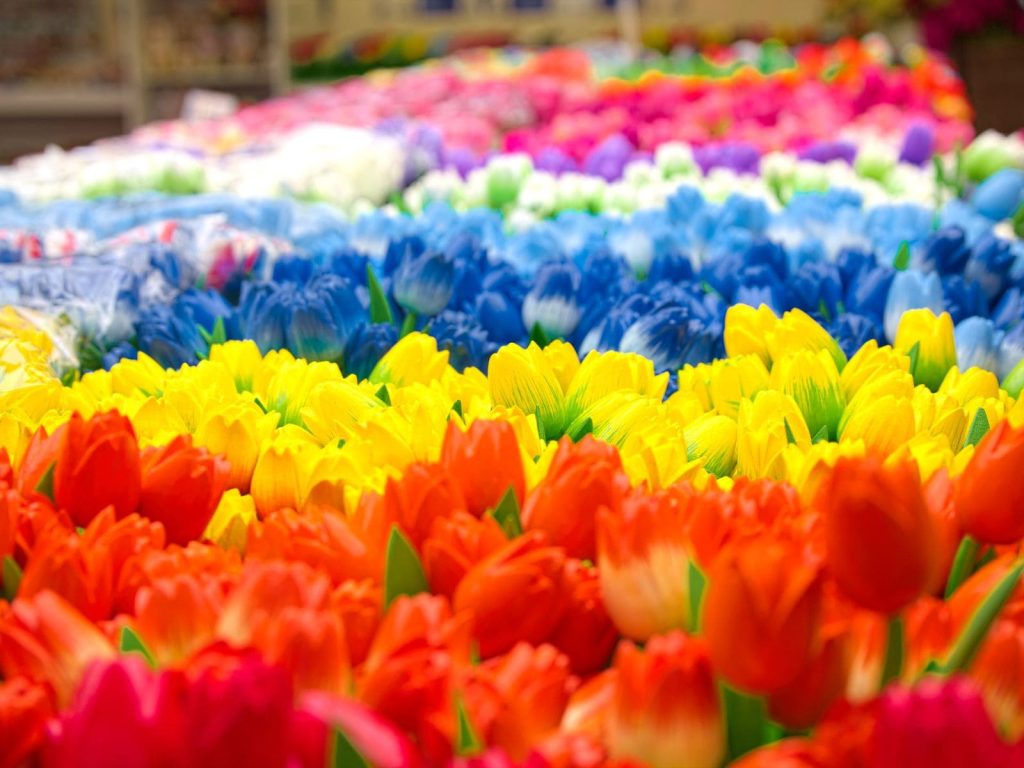
Continuing south of the historic center, on the banks of the Singel, the Bloemenmarkt, the only floating flower market in the world, with a long tradition dating back to 1862.
It’s the perfect place to buy some bulbs or seeds to take home as a souvenir or simply to admire the colorful displays and take photos that will be the envy of the best Instagram influencers.
PS Don’t forget to stop by one of the many cafés on the canal banks for a coffee or hot chocolate.
Amsterdam Historical Museum
The Amsterdam Museum is the perfect place to learn about the city’s past.
The museum is located in a beautiful 17th century building which was once the town’s orphanage.
Through various exhibitions, you will be able to follow the development of Amsterdam from a small fishing village in the Middle Ages to one of the most important ports in the world and a major European superpower.
What to see in the Amsterdam Museum?
The museum features a wide range of exhibits, from paintings and furniture to everyday objects, and interactive panels that help bring Amsterdam’s history to life.
The museum also has an audio guide in Italian.
I recommend everyone to visit the Amsterdam Museum on the first day, to understand how the city has developed over time. Which will then allow you to better enjoy the attractions and the city itself.
- Tickets : The ticket for adults costs €18, access is free for minors. Here you can find tickets to buy online.
- Hours : every day from 10:00 to 17:00.
- Where it is : Amstel 51. Location on Maps
Is the Amsterdam Museum included in the Amsterdam City Card?
Yes, the museum is included, this means that you will not have to pay the entrance fee. All you have to do is show your card to access for free.
The Red Light District
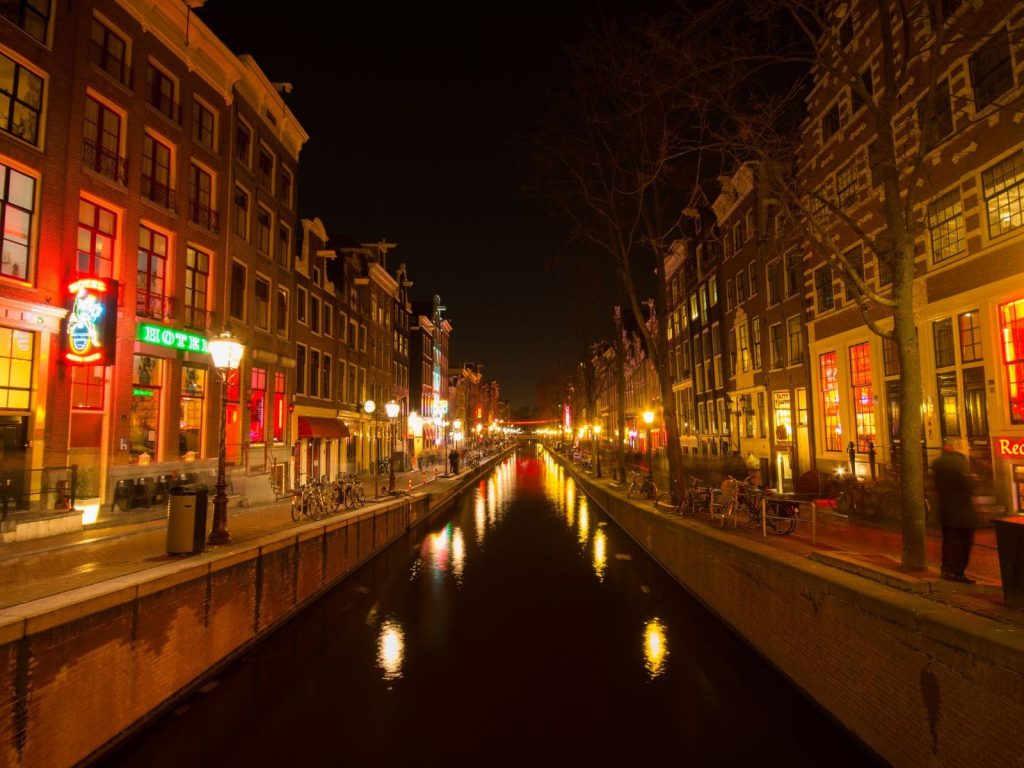
To end the day, I recommend visiting the famous Red Light District in Amsterdam. The district was born in the Middle Ages as a port area, after the arrival of the Protestants, the area was transformed into a recreational place for the numerous sailors who landed in the city.
And this is how the neighborhood began to acquire its reputation as a “place of transgression”.
Today it is one of the most popular tourist attractions in Amsterdam, with its many bars, clubs and coffee shops and of course the famous red-lit shop windows.
What to see in the red light district of Amsterdam?
- Obviously its illuminated windows, where sex workers perform and try to grab customers (don’t take pictures because it’s forbidden!).
- His numbers sexy shops. To buy a toy, or make a burlesque gift to a friend or relative.
- The Red Light Secrets : a museum dedicated to prostitution, started by a former prostitute who worked for many years in Amsterdam. The museum is interesting because it allows you to learn more about this world and answer questions such as: why does a woman (or man) start doing this job? how much do you earn? who are the regulars? Tickets for the museum can be purchased online on this site.
- Visit one of Amsterdam’s famous coffeeshops. The oldest and most famous is Bulldog The First, and it is located right in the red light district. Today it has become very touristic, but it is worth going because of its history (smoking is not compulsory, you can also have a hot chocolate or tea).
Day 2: The Museum Quarter
On this second day we will visit the very important Museum Quarter. An area located just south of the center of Amsterdam and which houses the most important museums of the city.
Here’s what today’s itinerary includes:
- Rijksmuseum
- Van Gogh Museum
- Vondelpark
- Moco Museum
- Serata a Leidseplein
Accommodation in the Museum Quarter
The Museum Quarter area (also known as Museumplein) is located just south of the historic center, and is great for those interested in the city’s major museums.
Other advantages of staying in this area are the fact that it is well connected (by metro, tram and bus) and that it is right in front of the Leidseplein, the nightlife district.
Where to stay in this area?
- Economic: The Concert Hotel
- Mid-Range : Hotel Aalders
- Boutique hotel: Apollofirst Boutique Hotel
FIND OTHER ACCOMMODATIONS AT MUSEUMPLEIN
Rijksmuseum
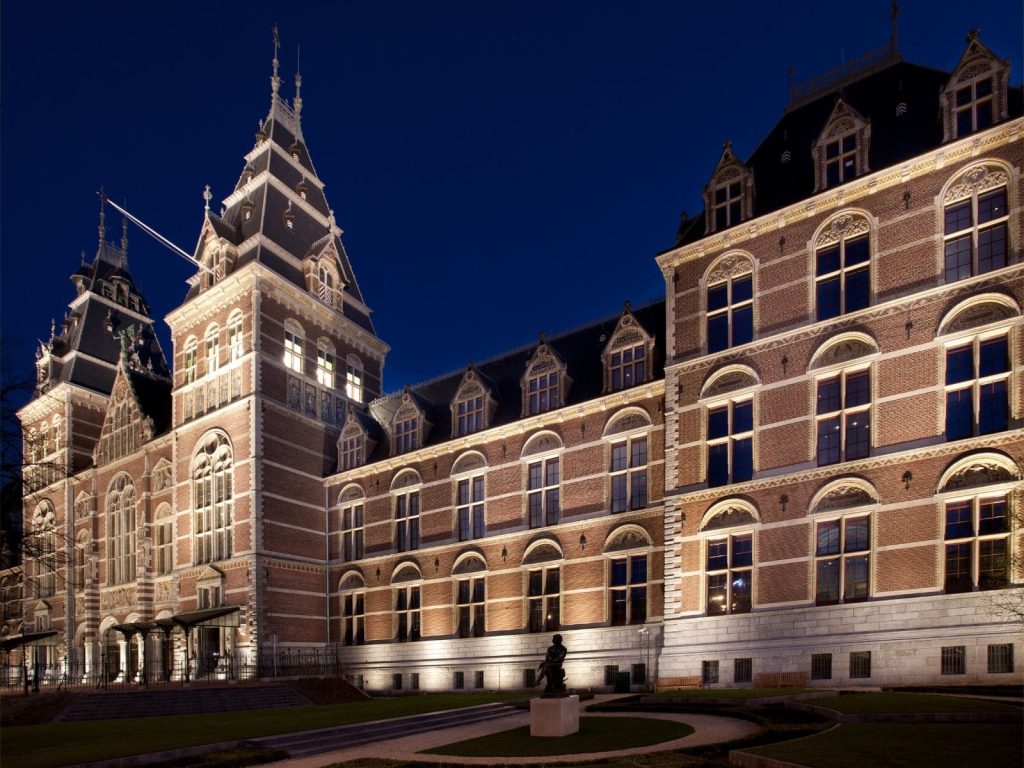
The first stop on this second day in Amsterdam is the most important museum in the city (and one of the 10 most important in the world). The Rijksmuseum houses a large number of masterpieces by Dutch Golden Age painters, such as Rembrandt, Vermeer and Hals.
The Rijksmuseum is located in Amsterdam’s Museum Quarter, an area which also includes the Stedelijk Museum (modern art) and the Van Gogh Museum.
To make the most of your visit to the Rijksmuseum, I recommend buying your ticket in advance online. This way you can skip the line and avoid not finding a seat (which happens very often!).
What to see in the Rijksmuseum?
The Rijksmuseum is very large (it takes at least 3 or 4 hours to visit it well) and is divided into sections, which trace the history of Dutch art from the Middle Ages up to 1950.
The most important works to see are ” The Night Watch ” by Rembrandt and the self – portrait by Van Gogh.
- Tickets : It costs €23.5 and can be purchased directly online on this site.
- Hours : every day from 9:00 to 17:00.
- Where it is : Museumstraat 1. Location on Maps
Is the Rijksmuseum included in the Amsterdam City Card?
Yes, the museum is included, this means that you will not have to pay the entrance fee. All you have to do is show your card to access for free.
Museo Van Gogh
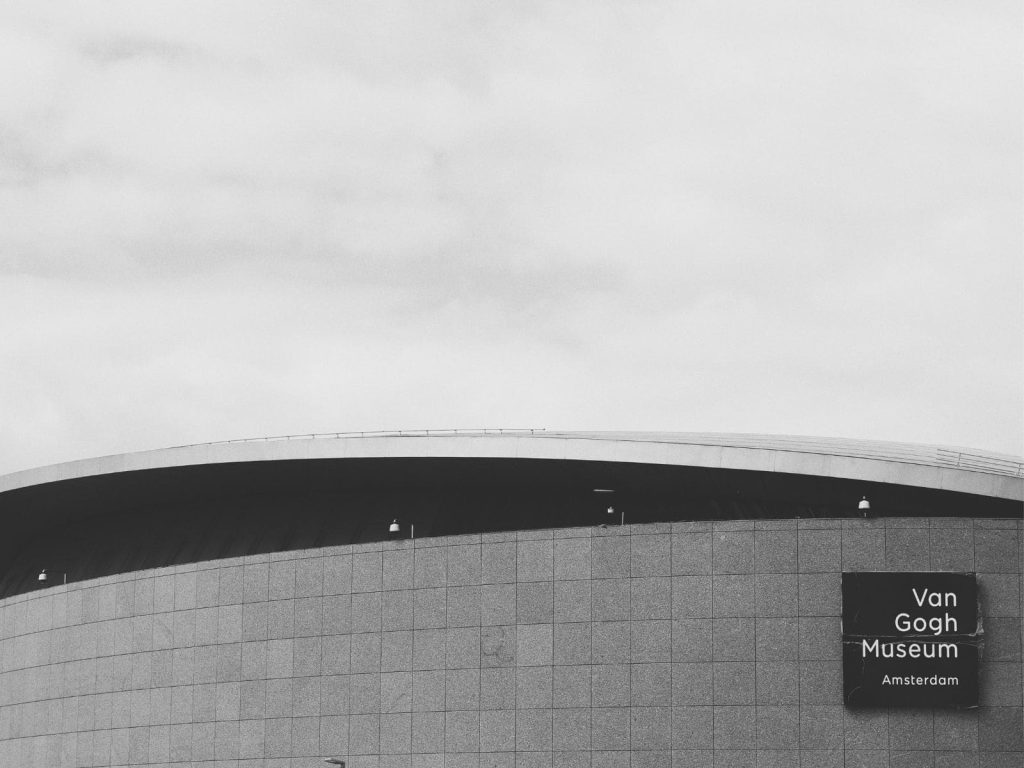
Staying on the subject of Van Gogh, our next stop is the museum dedicated to the most important Dutch artist in history. Vincent Van Gogh.
The Van Gogh Museum is located in the Museumplein area, an area that also includes the Rijksmuseum and the Stedelijk Museum.
What to see at the Van Gogh Museum?
The museum houses the world’s largest collection of Van Gogh paintings, as well as letters and drawings. The most famous paintings on display are “The Potato Eaters” and “The Sunflowers”.
- Tickets : the ticket costs €21 and can be purchased online at this site. I highly recommend purchasing a little in advance, because the museum is very popular and sometimes you have to wait days before finding a seat.
- Hours : every day from 09:00 to 18:00.
- Location : Museumplein 6. Location on Maps
Is the Van Gogh Museum included in the Amsterdam City Card?
Unfortunately no, the museum is not included, so you will have to pay for the ticket.
Vondelpark
After visiting the museums of Amsterdam, I suggest you take a short break in the largest park in Amsterdam: Vondelpark. The park is very large (120 acres) and is perfect for having a picnic, playing sports or just relaxing.
Furthermore, in the summer, many free concerts and events are held in the park. In addition, the area is full of restaurants and places to have a beer or a coffee.
Moco Museum

Our next stop is the Moco Museum, a contemporary art museum located in the museum area of Amsterdam. The Moco Museum is housed in a beautiful 19th century building and is dedicated to contemporary artists such as Banksy, Andy Warhol and Damien Hirst.
What to see at the Moco Museum?
The Moco Museum is spread over 3 floors and offers both a permanent exhibition with many works by Bansky. What different temporary exhibitions and interesting interactive installations. The final section known as the “Room of Mirrors” is very beautiful.
Personally I also visited the Stedelijk Museum but I found the Moco Museum “lighter” and more interesting.
- Tickets : the ticket for the Moco Museum costs €22.95 for adults, €19.95 for children aged 10 to 17 and free for children under 10. Here you can find tickets that can be purchased online.
- Hours : during the week from 8:30 to 21:00, on weekends until 22:00.
- Where it is : Honthorst Straat 20. Location on Maps
Is the Moco Museum included in the Amsterdam City Card?
Yes, the museum is included, this means that you will not have to pay the entrance fee. All you have to do is show your card to access for free.
Leidseplein

To round off your second night in Amsterdam head to the Leidseplein, a popular nightlife area full of bars, clubs and restaurants.
In summer, the square is filled with people drinking beer in the open air. While in the winter it’s the perfect place to lock yourself away in a live music venue.
Some of the most famous places in the area are the Melkweg, a concert hall with one of the best sound systems in the world (it does not only concerts but also techno nights on Tuesdays). And many places whose name I don’t remember, located in the various streets around the square.
My advice is to do “bar crawling” and have a drink in a local, and then maybe stop in the one that seems more suitable for you.
Day 3: The Jordaan and De Pijp District
On this third day of our 4 days itinerary in Amsterdam, we will discover the two neighborhoods of Jordaan and De Pijp.
Jordaan is the neighborhood where little Anne Frank, author of the famous diary, lived. In fact, one of the most important visits in the area is the Anne Frank House. The neighborhood is located within walking distance of the center.
De Pijp on the other hand is located further south, and is famous for its beer gardens, and for hosting the largest daytime market in Europe.
Here’s what we’ll see today:
- Anne Frank House
- Houseboat Museum
- Cafe Chris
- Albert Cuyp market
- Heineken Experience
- Brewery Troost, De Pijp
Accommodation in Jordaan and De Pijp
De Pijp and Jordaan are two great areas to stay in Amsterdam. Even if they have slightly different characteristics.
Jordaan is a very elegant and characteristic neighborhood, and is located a very short distance from the historic center. Basically you can reach the center on foot in less than 10 minutes. The only con is that it is a neighborhood with medium-high prices.
Here’s where to stay in the Jordaan:
- Economic: Hotel Mercier
- Mid-Range: Linden Hotel
- Luxury: Hotel 717
De Pijp, on the other hand, costs a little less, is located a short distance from the center (at most a couple of km). And it has the advantage of being close to both the Museum Quarter and the Leidseplein nightlife area.
Here are some of the best accommodations in De Pijp:
- Economic: The Muse Amsterdam
- Mid-Range: Pestana Amsterdam Riverside
- Luxury : Hotel Okura Amsterdam
Anne Frank House
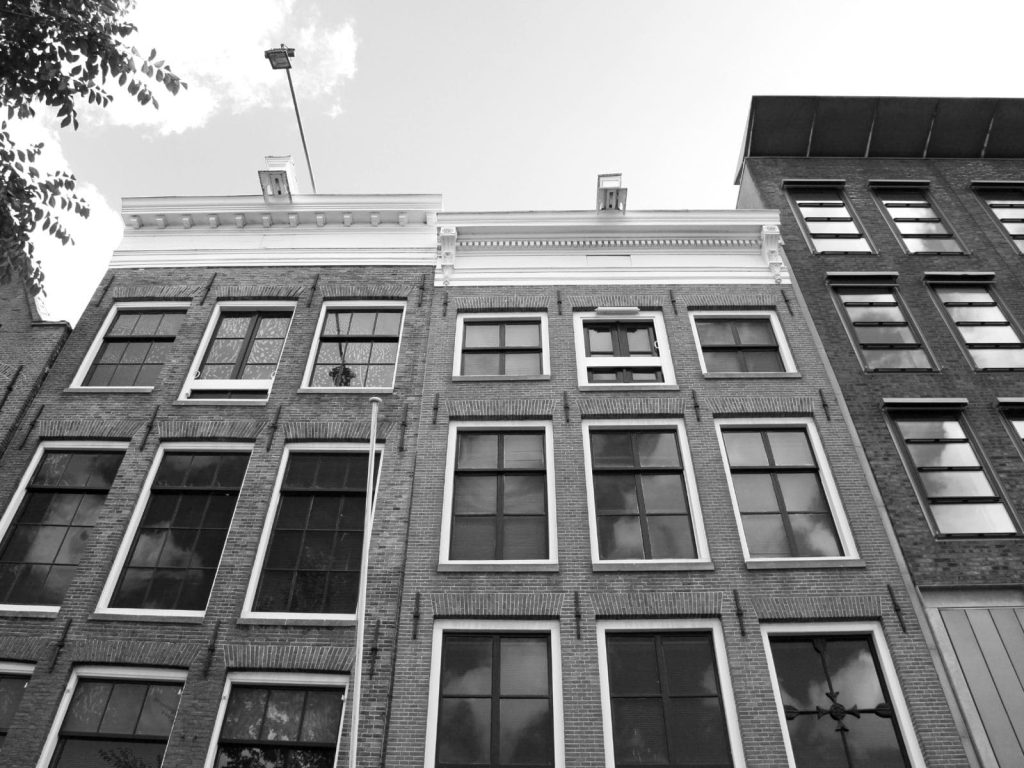
What to see in Amsterdam in 4 days?
A visit to the Anne Frank House cannot be missed on any itinerary.
The museum is located in the Jordaan district. A picturesque area, formerly inhabited by the working class and immigrants.
The Anne Frank House is the house where the young woman and her family hid for two years, between 1942 and 1944 to escape Nazi persecution.
Unfortunately the family was discovered and deported to concentration camps, but Anne’s diary survived and became one of the most famous books in history.
The diary was published by his father, the only survivor of the Frank family.
What to see in the Anne Frank House?
The museum is very well done and offers an interesting audio guide.
The visit lasts about an hour, during which you will be able to see the rooms where Anne and her family lived, as well as the secret passage that allowed access to the house.
In addition to Anna’s various objects, you will also find some fragments extracted from the original copy of her diary on display . The visit is very touching, includes an audio guide in Italian, and must be booked well in advance.
- Tickets : access to the Anne Frank house costs €16 for adults, €7 for children aged 10 to 17 and €1 for children under 10.
- Hours : every day from 9:00 to 22:00.
- Where it is : Westermarkt 20. Location on Maps
Houseboat Museum

Amsterdam is also famous for its house boats that line the city’s canals. But what are they?
These are real floating houses, which took hold after the end of the Second World War due to the lack of housing.
What to see at the Houseboat Museum?
You will be able to access a real houseboat, learn about the history and why of this practice and admire the interiors imagining how it is possible to live 365 days a year on a houseboat. Very interesting visit and included in the Amsterdam Card.
- Tickets : Tickets cost around €5 and can be purchased on site.
- Hours : every day from 10:00 to 17:00.
- Where it is : Prinsengracht 296K. Location on Maps
Is the Houseboat Museum included in the Amsterdam City Card?
Yes, the museum is included, this means that you will not have to pay the entrance fee. All you have to do is show your card to access for free.
Lunch at Bruin Cafè

An important part of Dutch culture is represented by the Brown Cafè (or Bruin Cafè). Not to be confused with a simple coffee shop due to the name. In reality they are pubs, with the interior made of a characteristic dark brown wood, often illuminated by very soft lights, a large bar, and people sipping a pint, around it.
I absolutely recommend you spend at least a few hours in one of these places, because it is one of the special things to do absolutely in Amsterdam.
The setting is very quiet, and the beers on offer are often excellent and craft. For food, only Dutch dishes/snacks are served, such as bitterballen and various cheeses.
Which Brown Café do you recommend?
Avoid the very central ones, and try the ones in the Jordaan neighborhood or De Pijp. My favorite place is called Cafè Chris, it’s been open since 1624 and it’s not the usual tourist place. Here is its location.
Albert Cuyp Market
For the next stop, head towards the De Pijp district, to reach it you can take tram 3 from the Hugo de Grootplein station and then get off at the Van Woustraat stop, near the Saphatipark.
Just 200 meters from the stop you will find the famous Albert Cuyp Markt market, the largest daytime market in the Netherlands open every day from 9:00 to 17:00 except Sundays.
The market is very large and will allow you to find all kinds of products, from food to clothes, to cheap souvenirs and typical Amsterdam products. If you want to go shopping in a typical place, I definitely recommend visiting the market.
Guided walking tour of Amsterdam’s most famous market
Do you want to learn more about taking part in a food and wine tour of the Albert Cuyp Market?
I propose this guided walking tour that will lead you to discover the famous market and its best stands and restaurants.
It all include:
- an expert guide who tells you all about the market and offers tons of tips on food, drink and what to do
- trivia about Dutch cuisine
- several tastings around the market stands and restaurants (come hungry!)
- tasting of beer and other drinks
Heineken Experience

Our next stop nearby is the Heineken Experience, an interactive museum dedicated to the Dutch beer giant, located in the company’s first brewery opened in 1873.
The visit lasts about two hours and includes a tour of the plant to learn about the different stages of beer production, several interactive installations and nice games to play with friends and finally, a tasting of two free beers in the Heineken bar.
The visit is very “tourist” I warn you. But for me it was interesting and fun. So I recommend it.
- Tickets: tickets cost 21€ (tasting included). These can be purchased online at this site.
- Hours: the museum is open every day from 10:30 to 21 on Fridays and Saturdays, and until 19:30 on other days of the week.
- Where it is : Stadhouderskade 78. Location on Maps
Is the Heineken Experience included in the Amsterdam City Card?
Yes, the museum is included, but it offers a discount, not free access. The discount is 25%.
Evening in a great beer hall
To round off the evening, I suggest you go to one of the excellent breweries in the area (de Pijp is also known for this!).
I recommend Brouweij Troost, a micro brewery that self-produces excellent craft beers.
You can have a beer, or have a tasting with 6 “shots” of beer. It also offers some typical Dutch snacks like cheese and bitterballen.
Day 4: Amsterdam Noord
And here we are on the fourth and last day of this 4-day itinerary in Amsterdam.
What will we see today?
The charming neighborhood of Amsterdam Noord.
Located a few steps from the center and reachable thanks to the free boats that you can take from the central station. As well as some attractions located in the east part of the city.
Here’s what we’ll see:
- Rembrandt house
- Royal Zoo artist
- NDSM
- Street Museum
- A’DAM Lookout
Accommodation in Amsterdam Noord
The district is located a short distance from the center with which it is connected thanks to the various boats that leave every 10-15 minutes. So at the area level it is excellent.
Furthermore, it is a relatively “cheap” neighborhood compared to the center and the other neighborhoods mentioned up to now. I recommend this area to those who want to save money.
Important: given the characteristics of the neighborhood it is not easy to find accommodation, so it is important to book well in advance.
Where to stay in Amsterdam Noord?
- Economic : ClinkNoord Hostel
- Mid-Range: Yotel Amsterdam
- Luxury: DoubleTree by Hilton
FIND OTHER ACCOMMODATIONS IN AMSTERDAM NOORD
Rembrandt House
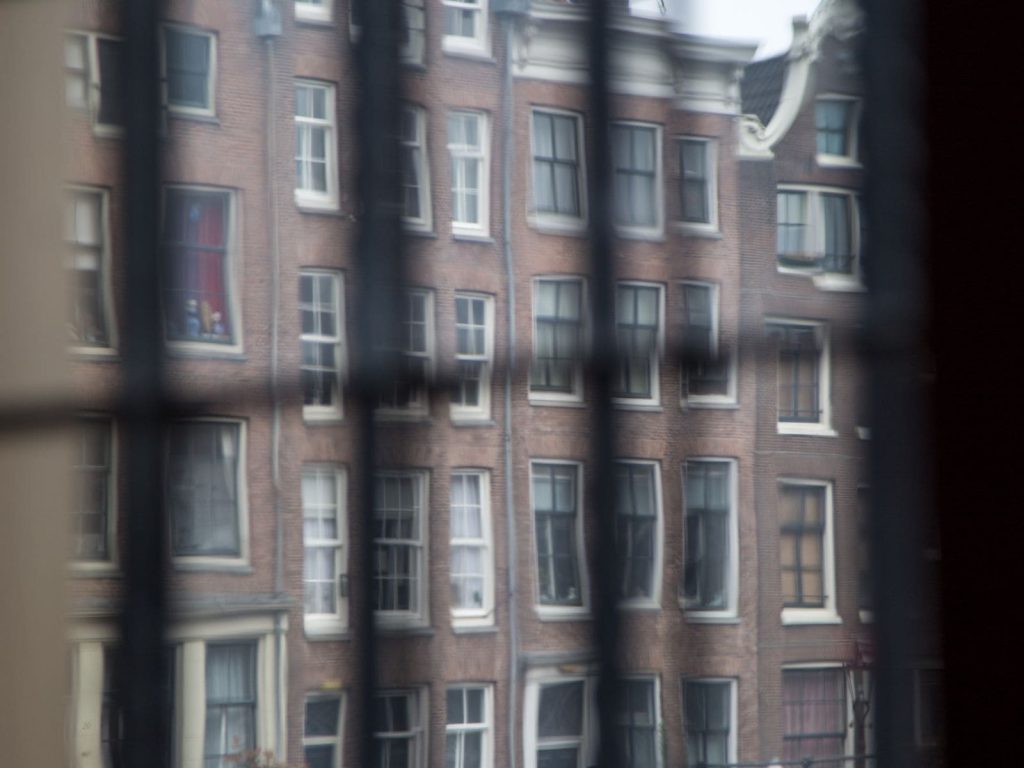
The first stop on the last day is the museum dedicated to the famous artist Rembrandt.
The Rembrandt House was the house where he lived and worked for about 20 years, between 1639 and 1659. The building itself is beautiful and a visit allows you to see his workshop, his paintings (including some of the most famous) and his personal belongings.
In total, the building has 3 exhibition floors, and you will be accompanied by a highly efficient audio guide throughout the journey.
One of the most interesting and best organized museums in Amsterdam. Also suitable for those who are “bored” or do not particularly appreciate the classic museums.
- Tickets : the ticket costs €15 and can be purchased online on this site.
- Hours : every day from 10:00 to 18:00.
- Where it is : Jodenbreestraat 4. Location on Maps
Is the Rembrandt House Museum included in the Amsterdam City Card?
Yes, the museum is included, this means that you will not have to pay the entrance fee. All you have to do is show your card to access for free.
Artis Royal Zoo for families with children

If you’re traveling with kids, I highly recommend visiting the Artis Royal Zoo. It is the oldest zoo in the Netherlands, opened in 1838, and one of the best known in Europe.
Amsterdam Zoo is quite large, housing over 700 different species of animals and also has a beautiful aquarium. The greenhouse dedicated to butterflies is beautiful.
- Tickets : costs €25 for adults and €21 for children aged 3 to 17. Here you can find tickets that can be purchased online.
- Hours : every day from 9:00 to 18:00.
- Where is it : Plantage Kerklaan 38-40. Location on Maps
Is the Artis Zoo included in the Amsterdam City Card?
Yes it is included, this means that you will not have to pay the entrance fee. All you have to do is show your card to access for free.
NDSM

Our next stop is in the city’s most creative district, Amsterdam Noord. To reach it, just go to the central station and take one of the many free ferries available several times an hour.
Our stop is the NDSM, a former shipyard, now transformed into a large cultural center that houses studios of artists, designers, art galleries, bars, restaurants and night clubs.
The area is very large and you can spend hours walking around without getting bored. Scattered throughout the complex you’ll find tons of art installations, including old means of transport, and some works that look like real spaceships.
Obviously there are many murals.
STRAAT Museum
Staying on the subject of murals, our next stop is the STRAAT museum, a museum dedicated to street art, located right in the NDSM complex. The museum houses more than 150 works, some created by the likes of Bansky.
All the works in the Straat were created on site, at the invitation of the museum and sometimes it is possible to find several artists creating new works. Many of these also feature an explanation of the context and why of the work.
- Tickets : Tickets cost €17.50 and can be purchased online at this site.
- Hours : Wednesday to Sunday from 10:00 to 18:00.
- Where it is : NDSM-Plein 1. Location on Maps
Is the STRAAT Museum included in the Amsterdam City Card?
Yes, the museum is included, but not for free access, the card in this case offers a 25% discount.
A’DAM Lookout
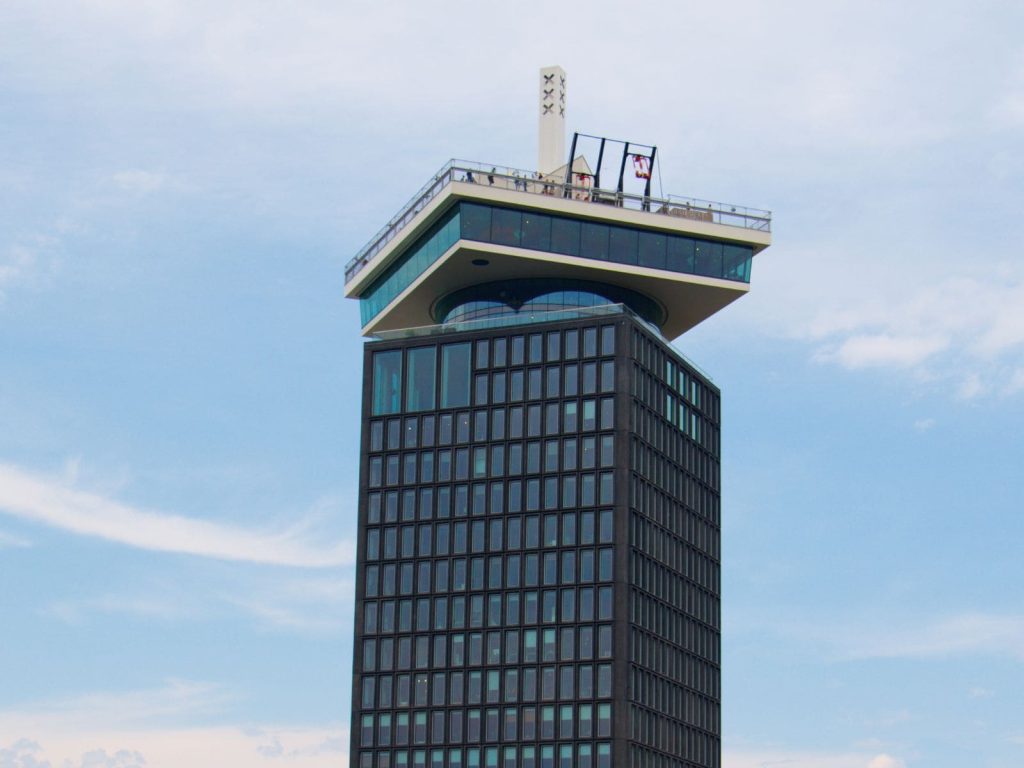
Our last stop is the A’DAM, the tallest tower in the city. From its panoramic terrace, the Lookout, you can enjoy one of the most beautiful views of Amsterdam. Especially if you go at sunset.
Once at the top, if you want, you can climb Over The Edge, the highest panoramic swing in Europe.
Otherwise you can eat in the panoramic restaurant, or enjoy a good cocktail.
- Tickets : you can access by paying the €16.50 ticket, which can be purchased on site.
- Hours : every day from 10:00 to 22:00.
- Where it is : Overhoeksplein 5. Location on Maps
Need help planning your 4 day Amsterdam itinerary? Do not hesitate to ask me your questions in the comments.
Are you going to Amsterdam? Read Also:
- Ultimate Amsterdam Itinerary: 3 Days in Amsterdam
- 5 Days in Amsterdam: Ultimate Amsterdam Itinerary
- Visit Madame Tussauds Museum in Amsterdam
- Visit the National Maritime Museum Amsterdam




